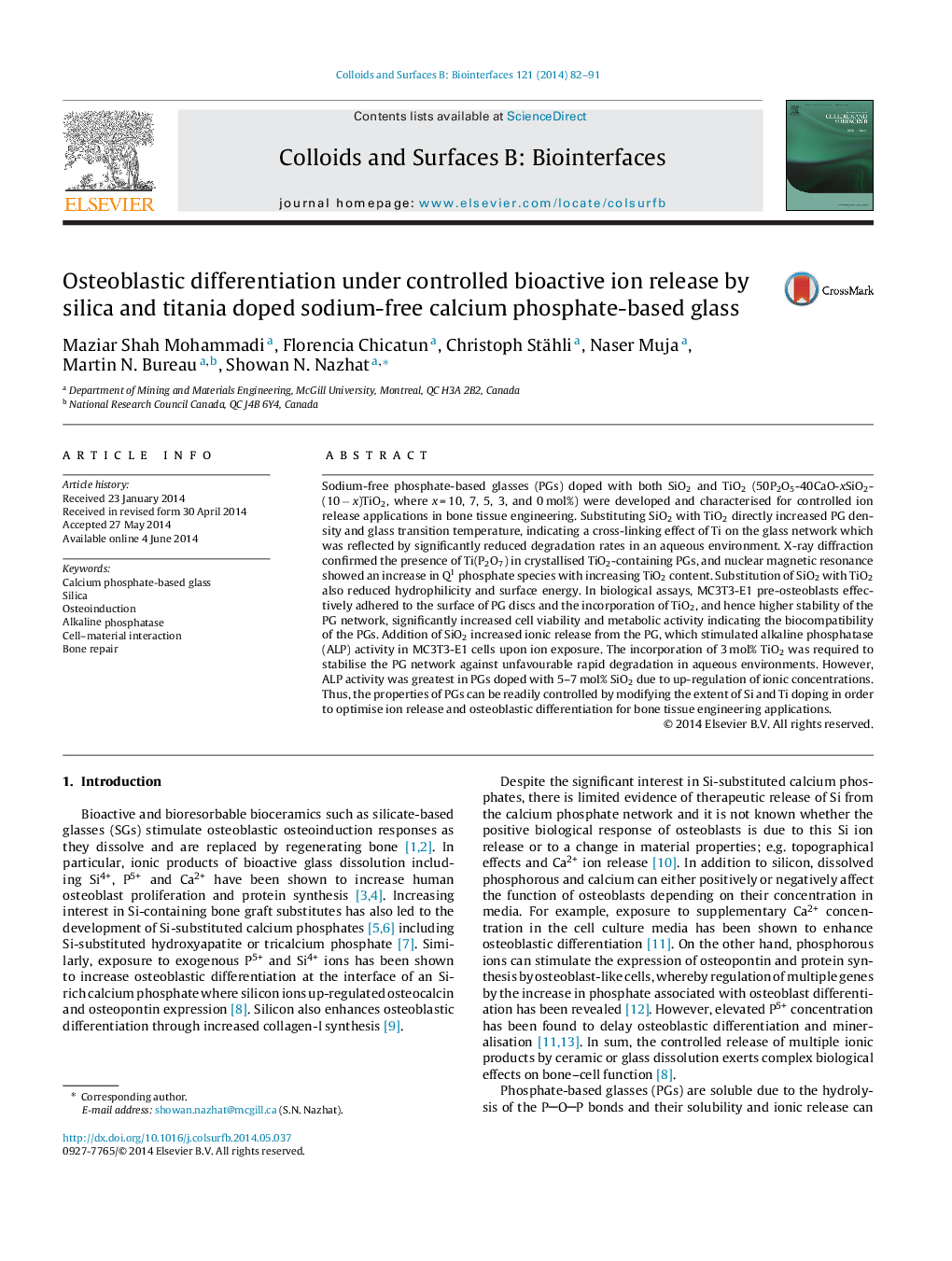| Article ID | Journal | Published Year | Pages | File Type |
|---|---|---|---|---|
| 599610 | Colloids and Surfaces B: Biointerfaces | 2014 | 10 Pages |
•Novel sodium-free phosphate-based glasses (PGs) doped with both SiO2 and TiO2 were developed.•Substituting SiO2 with TiO2 significantly reduced degradation and ion release rates.•Substitution of SiO2 with TiO2 also reduced hydrophilicity and surface energy.•TiO2 incorporation resulted in improved MC3T3-E1 preosteoblasts attachment, viability and metabolic activity. ALP activity was greatest in PGs prepared with 5–7 mol% SiO2.•The physiochemical properties of PGs can be controlled by modifying the extent of Si and Ti doping to optimise ion release and osteoblastic responses.
Sodium-free phosphate-based glasses (PGs) doped with both SiO2 and TiO2 (50P2O5-40CaO-xSiO2-(10 − x)TiO2, where x = 10, 7, 5, 3, and 0 mol%) were developed and characterised for controlled ion release applications in bone tissue engineering. Substituting SiO2 with TiO2 directly increased PG density and glass transition temperature, indicating a cross-linking effect of Ti on the glass network which was reflected by significantly reduced degradation rates in an aqueous environment. X-ray diffraction confirmed the presence of Ti(P2O7) in crystallised TiO2-containing PGs, and nuclear magnetic resonance showed an increase in Q1 phosphate species with increasing TiO2 content. Substitution of SiO2 with TiO2 also reduced hydrophilicity and surface energy. In biological assays, MC3T3-E1 pre-osteoblasts effectively adhered to the surface of PG discs and the incorporation of TiO2, and hence higher stability of the PG network, significantly increased cell viability and metabolic activity indicating the biocompatibility of the PGs. Addition of SiO2 increased ionic release from the PG, which stimulated alkaline phosphatase (ALP) activity in MC3T3-E1 cells upon ion exposure. The incorporation of 3 mol% TiO2 was required to stabilise the PG network against unfavourable rapid degradation in aqueous environments. However, ALP activity was greatest in PGs doped with 5–7 mol% SiO2 due to up-regulation of ionic concentrations. Thus, the properties of PGs can be readily controlled by modifying the extent of Si and Ti doping in order to optimise ion release and osteoblastic differentiation for bone tissue engineering applications.
Graphical abstractFigure optionsDownload full-size imageDownload as PowerPoint slide
